D and F Block Elements Class 12 Notes
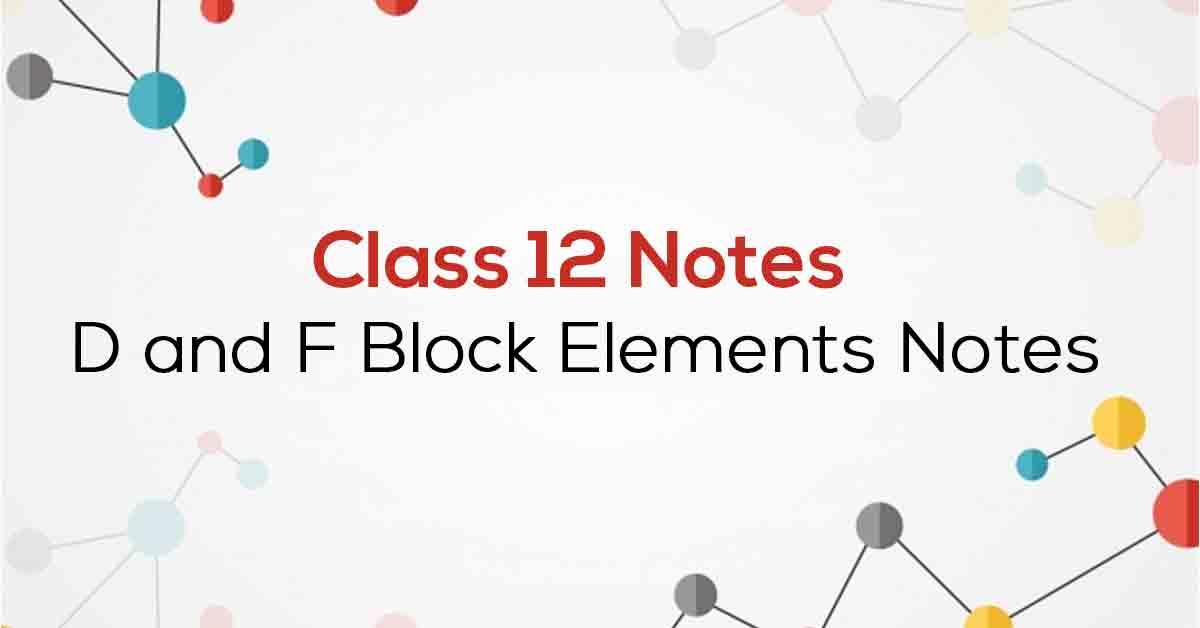
Class 12 Chemistry Chapter 8 D and F Block Elements Notes- Pdf Download
Chapter 8 D and F Block Elements
In this article, we will provide NCERT Chemistry 12th Grade Chapter 8 notes on d and f block elements. All notes on this page come with detailed step-by-step processes and full explanations. Students easily get top marks in Chemistry to ensure that they practice NCERT Chemistry notes from all chapters.
CBSE Grade 12 Chemistry Chapter 8 talks about lanthanides and actinoids, applications of d- and f-block elements, positions in the periodic table, properties of transition elements (d-blocks), and topics other related. Vidyakul provides over 400 practice questions for all the subtopics covered in Chapter 8. Keep scrolling to discover NCERT Solutions for Grade 12 Chemistry, Chapter 8.
CBSE CLASS 12th CHEMISTRY 8 NOTES
Points to Remember
Below-mentioned are some of the important points to remember from NCERT Class 12 Chemistry Chapter 8 to ace your exams:
All transition elements are metals. They possess characteristic properties of metals such as high tensile strength, malleability, ductility, and thermal and electrical conductivity.
Transition elements have high melting and boiling points due to stronger interatomic bonding.
The atomic and ionic radii of transition elements are smaller than those of s-block elements but larger than those of p-block elements.
Transition elements exhibit higher enthalpies of atomization due to stronger interatomic bonding.
Among the elements of the first triathlon series, zinc has the least enthalpy of atomization.
Among the elements of the 3d-3d-transition series scandium does not show variable oxidation states while manganese shows a maximum number of oxidation states.
Transition elements form colored complexes. The Colour of the complexes is due to the absorption of light energy due to d-d transitions in partially filled d-orbitals.
The first series of transition metal oxides are generally formed by reacting metals with oxygen at high temperatures. These oxides may be acidic, basic, or amphoteric. These oxides dissolve in acids and bases to form oxometallic salts. K2CrO4, K2Cr2O7, and KMnO4 are common examples of oxometallic salts.
Lanthanoids are a series of elements that involve the filling of 4f- subshell. These are fourteen elements the following lanthanum from Cerium to Lutetium.
Actinoids are a series of elements that involve filling of 5f- subshell. These are fourteen elements the following Actinium from Thorium to Lawrencium.
The common oxidation state of lanthanoids and actinoids is +3.
Topic and Sub-Topics
NCERT Grade 12 Chemistry Chapter 8 comes with a simple set of questions. Students who are well prepared can easily answer questions regardless of difficulty level. Students have to solve many different questions in order to be well prepared to answer different questions in the exam.
All study materials provided by Vidyakul on CBSE Chapter 8 Grade 12 Chemistry is based on the latest syllabus. Before we look at the NCERT notes, let's take a look at the list of topics covered in CBSE Grade 12 Chemistry Chapter 8:
Download this solution for FREE Download This PDF
Download Vidyakul App for more videos, PDF's and Free video lectures.

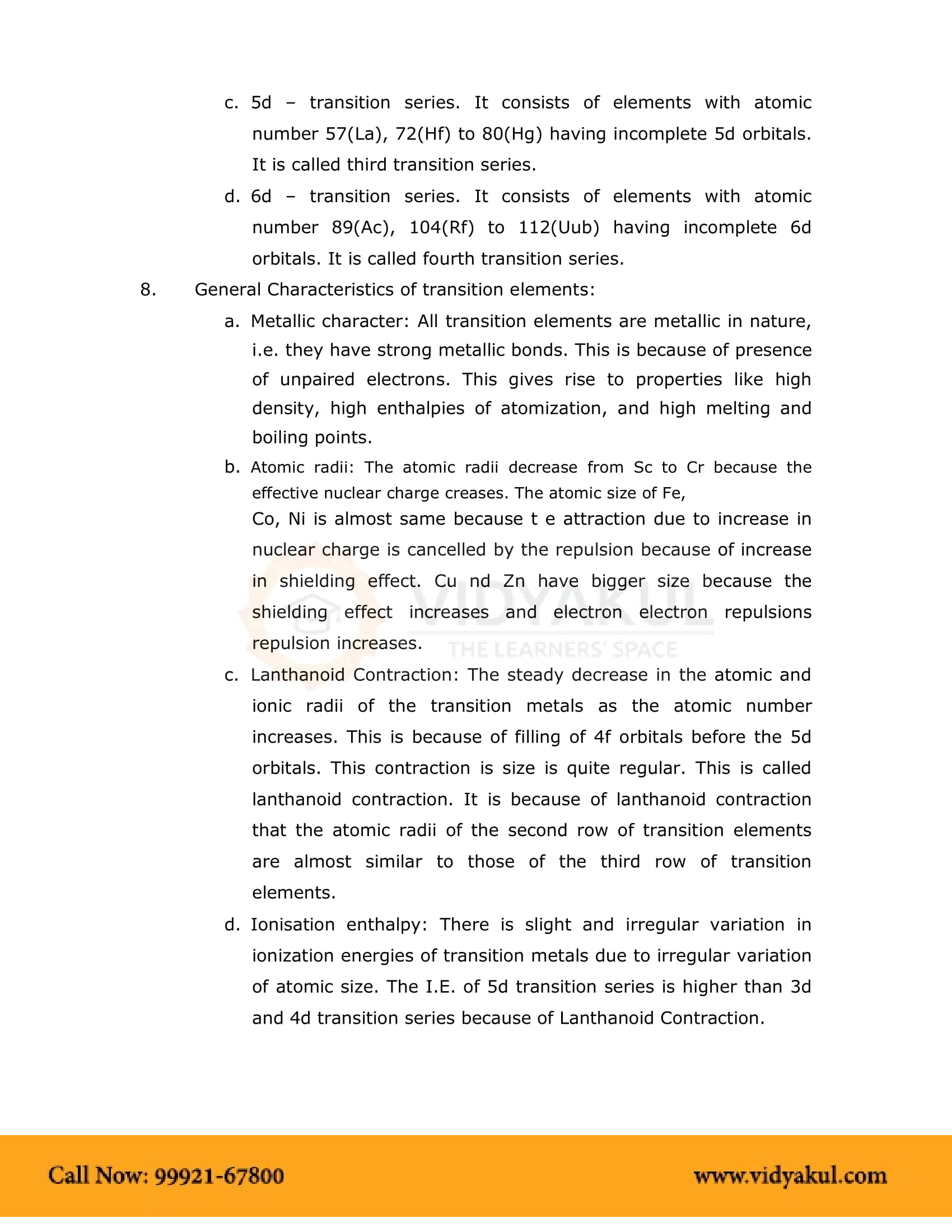
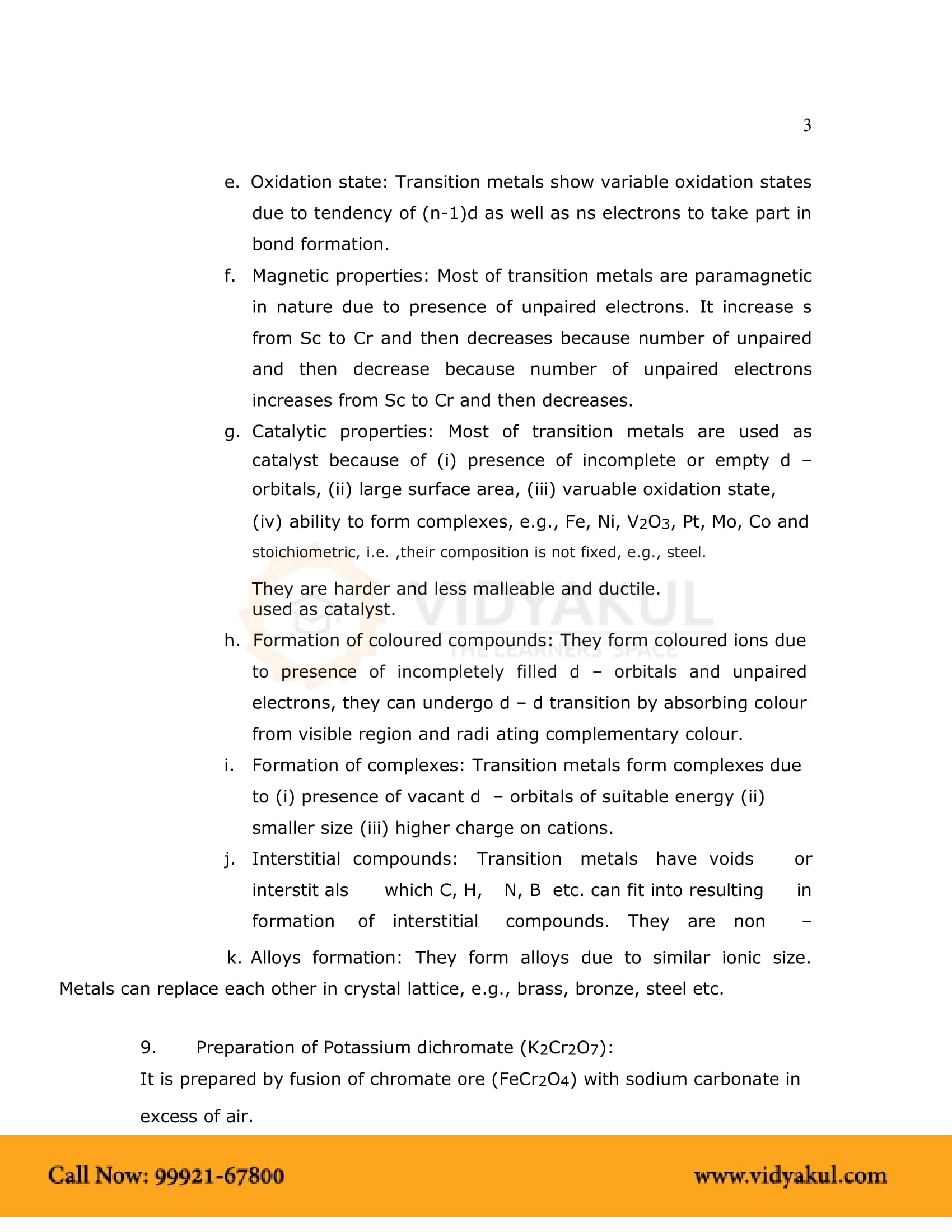
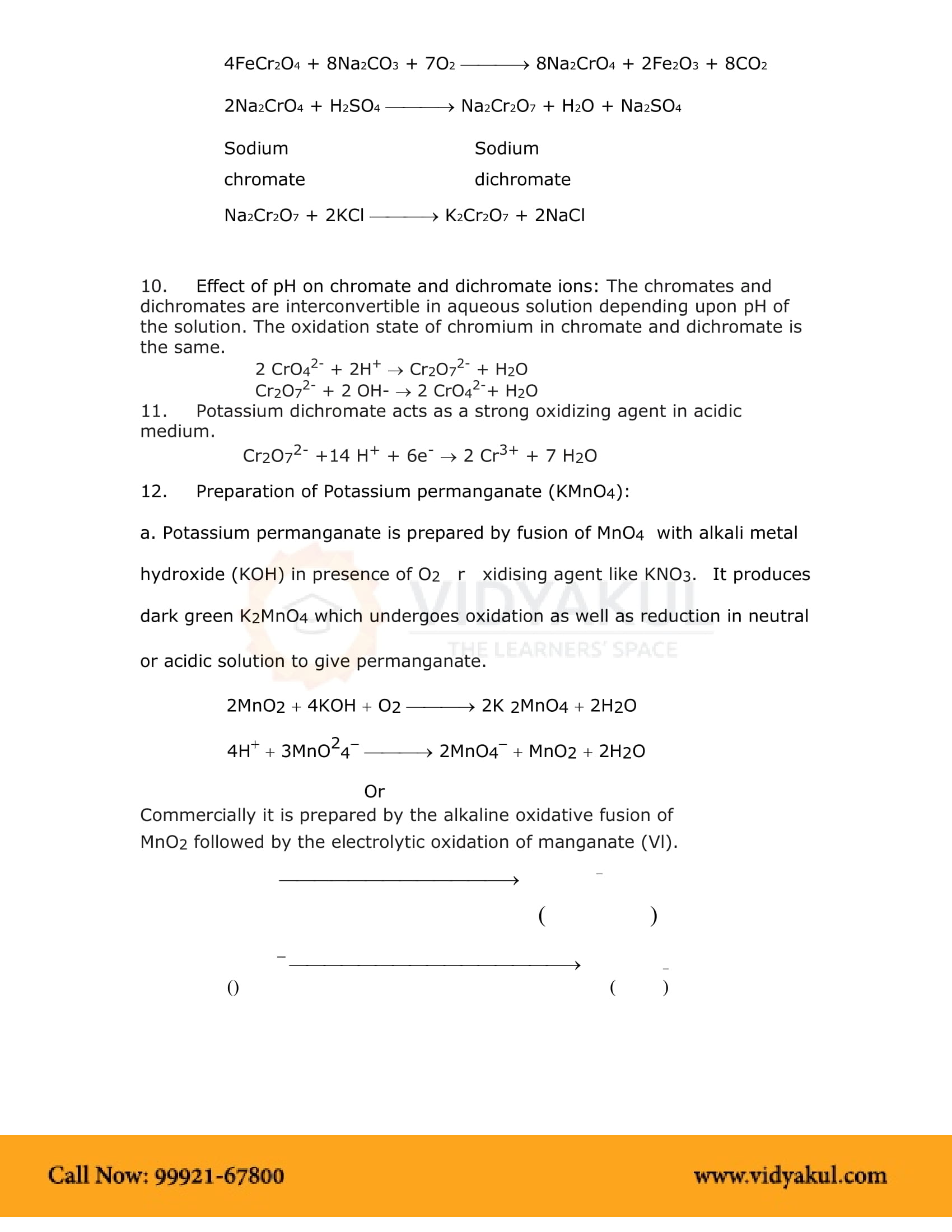
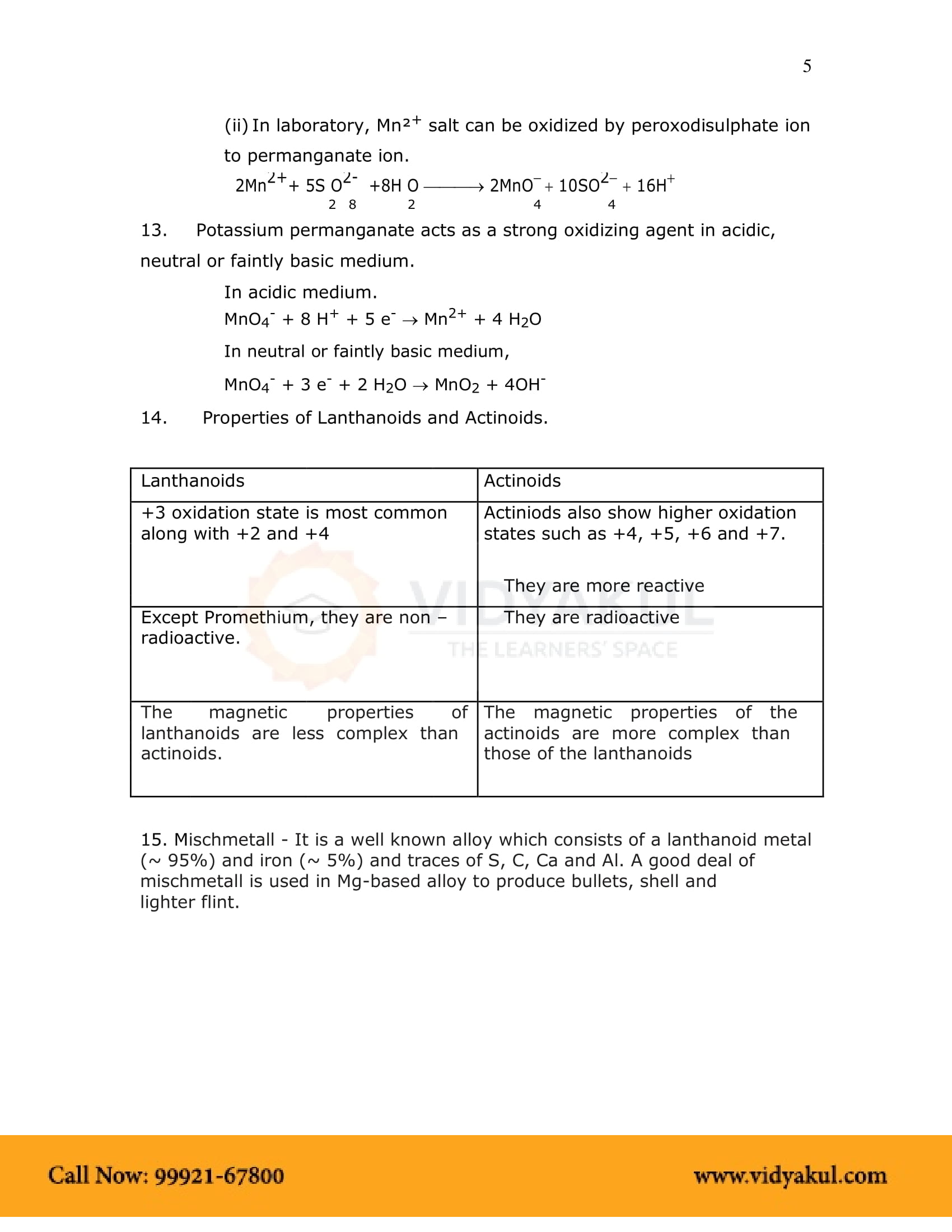
Important Links:
Few Important Questions
What is called as a ‘Transition’ element?
Transition elements/transition metals are elements that have partially filled d orbitals.
What does the ‘Hund’s rule’ state?
Hund’s rule: every orbital in a subshell is singly occupied with one electron before any one orbital is doubly occupied, and all electrons in singly occupied orbitals have the same spin.
What is meant by ‘Metallurgy’?
Mettallurgy is the art and science of extracting metals from their ores and modifying the metals for use.
Practice Questions
Write the electronic configuration for the following elements
Mn2+, Cu+, Pm3+, Th4+
Define interstitial compounds. Explain why these compounds are known as transition metals.
What is disproportionation? Give an example of a disproportionation reaction occurring in an aqueous solution.
Using Hund’s rule do the following:
Derive the electronic configuration of Ce3+ ion, find the magnetic moment on the using the ‘spin-only’ formula
What is meant by lanthanoid contraction?
List the various oxidation states exhibited by lanthanoids.



